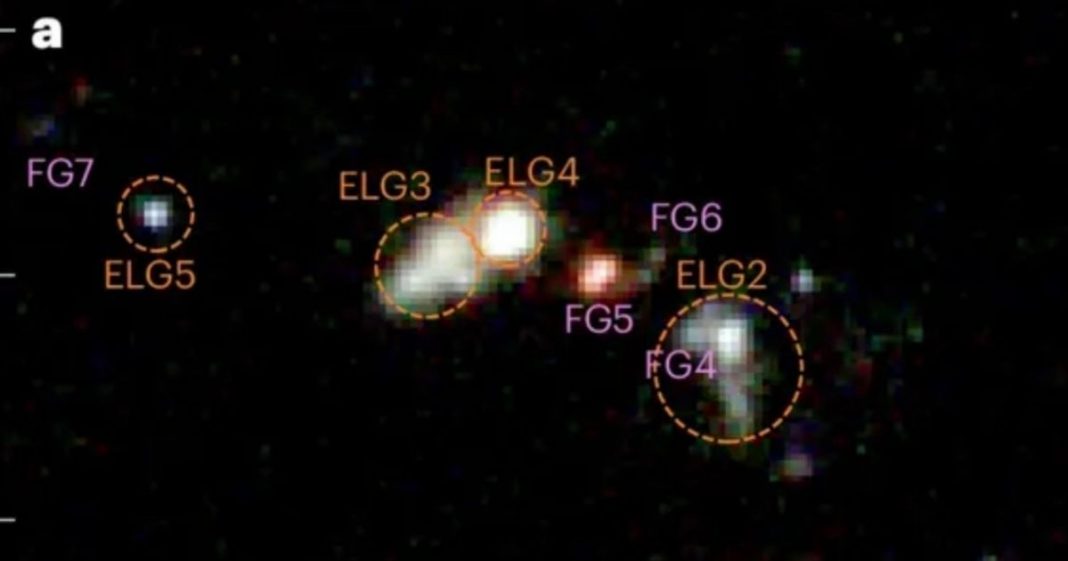Clever boffins have found a rare galaxy crash unlike any other previously located. The huge five-galaxy strong system could one day feed destructive black holes
A bonkers find from boffins has found a “galaxy crash” unlike any other seen before and it could end up feeding black holes.
In an incredibly rare find, canny astronomers spotted a system made up of five emerging galaxies a mere 800 million years after the Big Bang. The clashing five were discovered by data from the Hubble Space Telescope and NASA’s James Webb Space Telescope (JWST) in the US.
It is a discovery boffins are saying is “exceptionally rare” and was down in part to luck, according to the lead author of a study on the subject.
Weida Hu, a postdoctoral researcher at Texas A&M University, explained to Live Science: “Finding such a system with five physically linked galaxies is exceptionally rare, both in current simulations and in observations… The probability of detecting even one [multiple-galaxy merger] is quite low, which raises the possibility that we may have been ‘lucky’ in identifying this system so early.”
Galaxy mergers involving two systems are rare enough, so a merging of five is remarkable, say experts. The merger, dubbed ‘JWST’s Quintet’, also includes 17 galaxy clumps. These are bright regions in galaxies where stars are forming more quickly than normal.
In all, the system has a stellar mass of around 10 billion suns. This huge mass means it could one day develop into a huge ‘quiescent’ galaxy, which stop forming new stars.
The system could also end up feeding black holes.
The five galaxies are likely connected and not independent of each other, the scientists said in the study published in the Nature Astronomy journal.
But that also means there could be other galaxies attached to the quintet that have not yet been discovered.
“If you look at all galaxies, then 20-30% of them will be in a merger,” professor of extragalactic astronomy at the University of Manchester said to Live Science. “This will be just two galaxies. The fraction of these multiple merger systems will be much, much lower, and we don’t have stats on it quite yet, but certainly lower than 1%.”
The two main galaxies in the system are around 43,000 light years apart, considered spatially close together.
In December lat year, new images showed a galaxy forming that is similar to what our Milky Way’s mass might have been at the same stage of development.
The James Webb Space Telescope detected and “weighed” a galaxy that existed about 600 million years after the Big Bang.
Other galaxies Webb has detected at this time period are significantly more massive, Nasa said.
This galaxy has been nicknamed Firefly Sparkle as it looks like a “sparkle” or swarm of lightning bugs on a warm summer night.
For the latest breaking news and stories from across the globe from the Daily Star, sign up for our newsletter by clicking here.
#Telescope #discovers #exceptionally #rare #galaxy #crash #feed #destructive #black #hole





